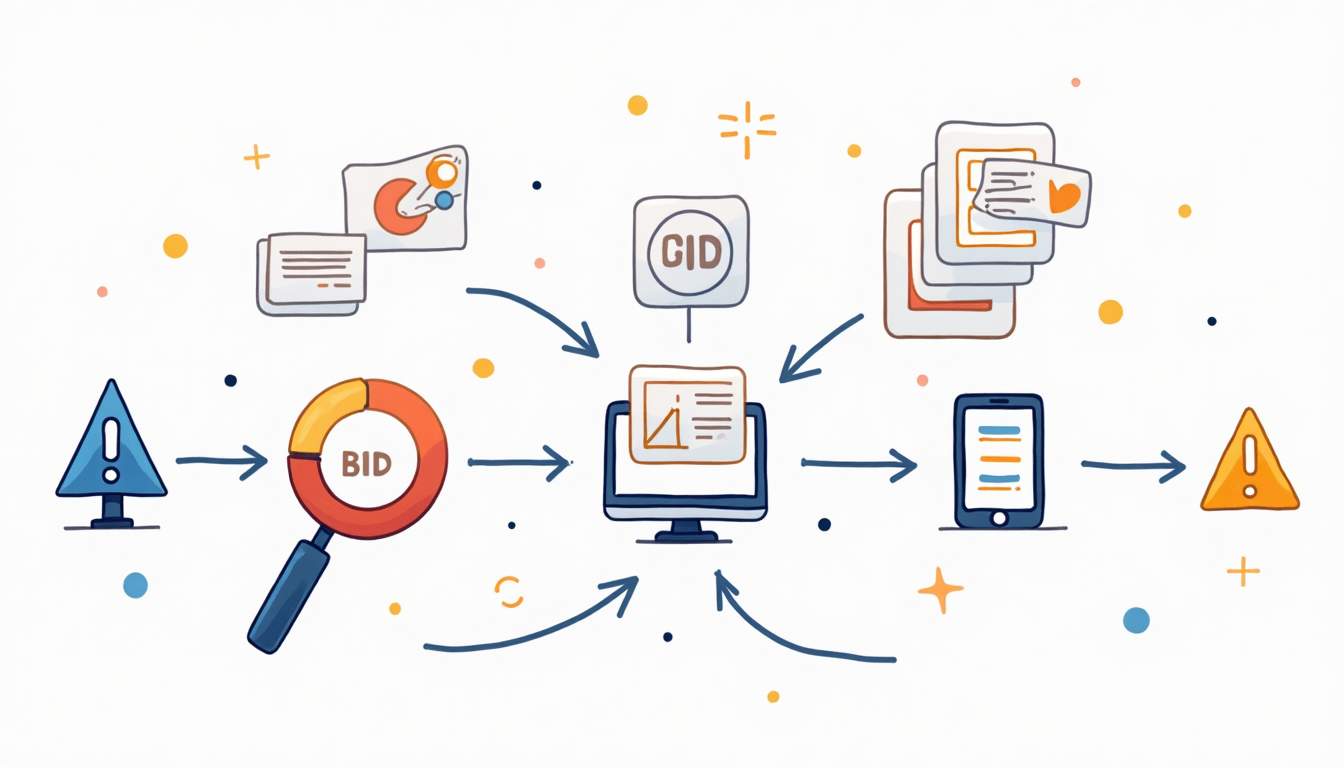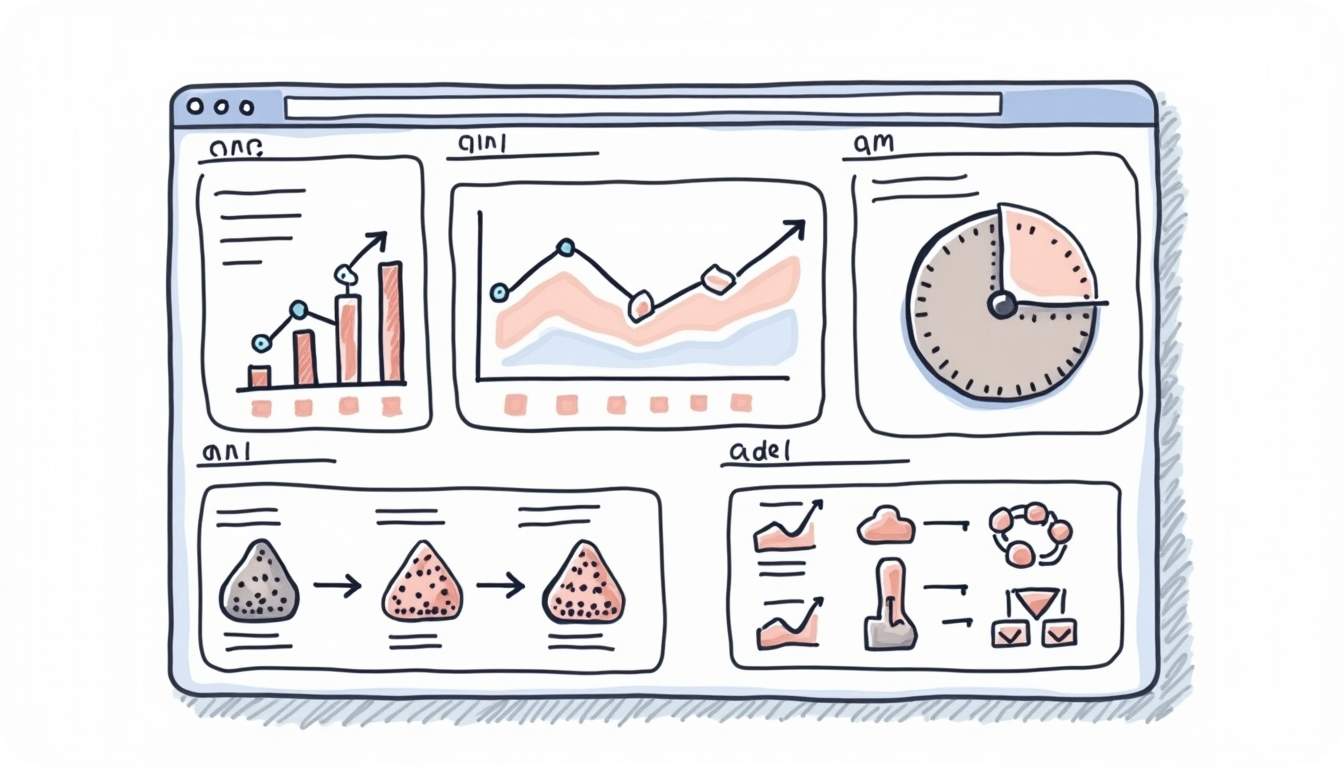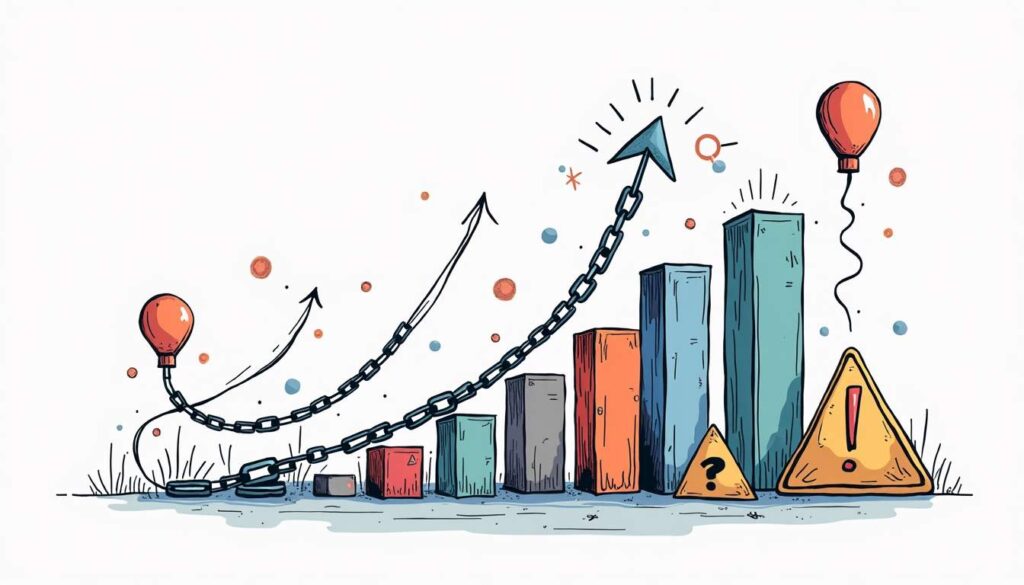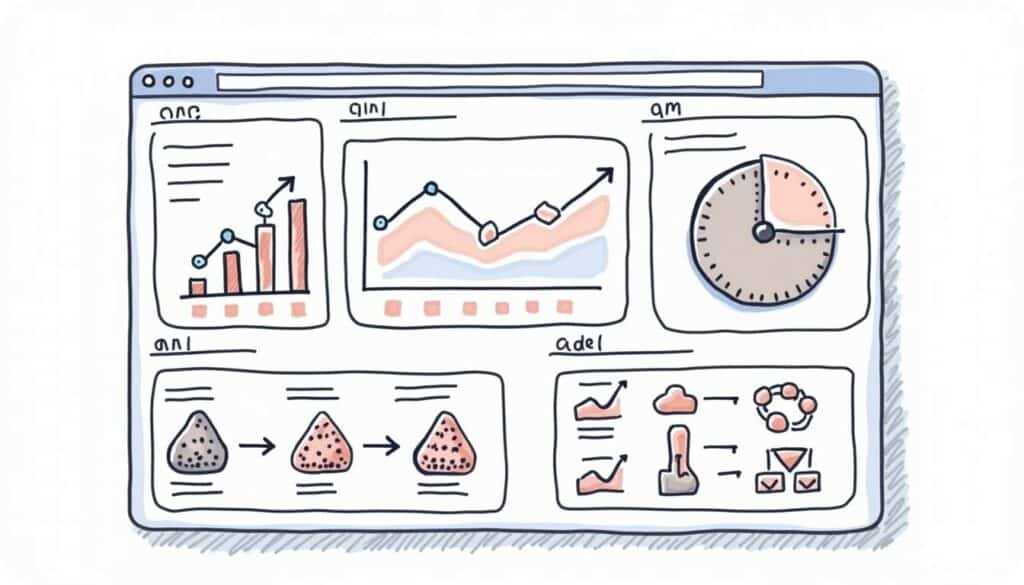Table of Contents
- How the Google Ads Auction Really Works
- Recent shifts in bidding—and what they mean for advertisers
- The role of AI and predictive signals in auction performance
- Performance benchmarks to watch in 2025
- Practical strategies to win more auctions
- Ad quality, landing pages, and extensions: the non-bid weapons
- Measurement, attribution, and data hygiene
- Common pitfalls and how to avoid them
- Putting it all together: an action checklist
- Final thoughts: adapt and focus on value
The Google Ads auction is the beating heart of paid search. For advertisers, understanding how it works — and how it’s changing — is the difference between wasted budget and profitable growth. This guide breaks down the mechanics, recent shifts in bidding, the role of AI, benchmarks to watch, and practical strategies to win more auctions without overspending.
How the Google Ads Auction Really Works
At its core, the Google Ads auction is a real-time process that decides which ads appear on a search results page and in what order. Every time someone searches, Google runs an instant auction among advertisers targeting that query. Winning depends on more than just how much is bid.

Previously, there was a simpler view: highest bidder wins. Today’s reality is nuanced — bid amount, ad quality, expected impact of extensions, and contextual signals all factor into the final ad rank. Importantly, Google now runs separate auctions for each ad position, which prevents a single advertiser from monopolizing multiple positions on the same results page.
What determines Ad Rank
Ad Rank is the score Google uses to decide placement. The primary components are the bid (maximum amount willing to pay) and ad quality (which blends expected click-through rate, ad relevance, and landing page experience). Additionally, Google factors in the expected impact of ad extensions and formats.
Because Ad Rank is a composite signal, a higher bid doesn’t guarantee a top position if ad quality is poor. Conversely, a well-crafted ad with a lower bid can outrank higher bids by delivering better user experience and engagement.
Moreover, Google continuously updates its algorithms to better interpret user intent and the context surrounding a search, including device type, location, time of day, and even user behavior patterns. This dynamic evaluation means that the same ad may perform differently depending on these fluctuating factors, making campaign optimization an ongoing effort rather than a set-and-forget task.
Why separate auctions for each position matter
Separate auctions mean advertisers are effectively competing for each slot independently. This reduces the chance that a single advertiser can dominate the page and encourages fairer competition. It also opens strategic opportunities: targeting the exact position that balances visibility and cost can be more profitable than always chasing the top spot.
Additionally, by holding distinct auctions for each position, Google encourages diversity in ad types and messaging. Advertisers can tailor their creatives specifically for certain placements, whether aiming for a prominent top position or a lower, more cost-effective spot. This system also helps Google maintain high user satisfaction by ensuring the ads shown are both relevant and varied, enhancing overall search experience.
Recent shifts in bidding—and what they mean for advertisers
The past year has brought notable changes to bidding options and best practices. Advertisers should adapt to the deprecation of some legacy tools and embrace smarter, data-driven approaches.
Deprecation of Enhanced CPC (eCPC)
Enhanced CPC was once a go-to for advertisers who wanted some automation but still control over bids. As of March 2025, eCPC has been phased out for Search and Display campaigns, with those campaigns transitioned to Manual CPC. That change nudges advertisers toward fully automated Smart Bidding strategies.
For advertisers who relied on eCPC to nudge bids for conversions, the takeaway is to migrate to automated strategies that can handle auction-time signals more effectively. Manual bidding is still viable, but it requires more hands-on management and precise adjustments.
Moreover, the deprecation impacts not just bidding strategies but also campaign performance measurement. Advertisers should revisit their campaign data to analyze past performance under eCPC and adjust expectations during the transition period. Educating campaign managers on the nuances of Smart Bidding will also help smooth the shift and harness new bidding capabilities.
The rise of Smart Bidding and automated strategies
Smart Bidding uses machine learning to optimize bids in real time, considering signals like device, location, time of day, and even user intent. These strategies can be targeted toward conversions, value, or ROAS (return on ad spend), making them flexible for different business goals.
To unlock Smart Bidding’s potential, high-quality conversion tracking is essential. Feeding the algorithm with accurate, granular data — including conversion value and offline conversions where possible — improves predictions and bidding decisions.
In addition, advertisers should continuously refine their audience signals and experiment with different Smart Bidding goals. Combining Smart Bidding with audience targeting, such as affinity or in-market segments, empowers campaigns to reach the right customers at the right time. Ongoing monitoring and data-driven adjustments also play a critical role in maximizing return and campaign efficiency.
The role of AI and predictive signals in auction performance
AI is now baked into both bidding and creative workflows. That evolution isn’t just about convenience; it changes how auctions are won and how ad creatives perform.
AI-powered bidding
AI-driven bidding analyzes historical and real-time signals to forecast conversion likelihood and adjust bids accordingly. Predictive models can identify which auction moments are most valuable, allowing bids to be proactively increased or decreased.
These systems are particularly valuable in high-competition markets where small bid differences can significantly affect ROI. Predictive bidding can also surface micro-opportunities — for instance, a low-cost, high-intent user segment that manual strategies might miss.
AI-assisted creative optimization
AI is also improving how ad assets are created and tested. Responsive Search Ads and automated asset combinations use machine learning to pick the best headline and description pairings for a given query and user. This increases relevance and expected CTR, which feeds back into stronger Ad Rank.
When creative is optimized automatically, advertisers still need to guide the system with diverse, high-quality assets and clear brand messaging. The algorithm benefits from inputs that represent the brand voice and value propositions accurately.
Performance benchmarks to watch in 2025
Benchmarks shift over time, and 2025 shows distinct trends advertisers should consider when measuring success.
CTR, CPC, and CVR trends
Overall click-through rates (CTR) rose by about 3.7% from 2024 to 2025, suggesting ads are more engaging or better targeted. However, average cost-per-click (CPC) increased by roughly 12.9%, and 87% of industries saw higher CPCs. Higher competition and smarter bidding strategies likely drive these cost increases.
Conversion rates (CVR) improved by approximately 6.8%, implying that clicks are increasingly qualified. Higher CVR helps offset rising CPCs, but only when campaigns are optimized for conversions and value.
Interpreting these numbers for strategy
Higher CTR and CVR are positive signals, but rising CPC cautions against complacency. The key is to focus on value: prioritize traffic that converts and contributes meaningful revenue rather than chasing volume alone. Smart Bidding and value-based bidding become crucial in this context.
Practical strategies to win more auctions
Winning auctions consistently is less about always being the highest bidder and more about smart, data-driven choices across targeting, creatives, tracking, and bidding strategies.
Seasonality adjustments
Seasonality Adjustment is a feature that allows temporary changes to conversion expectations for specific events (like sales or holidays). Use it to signal to automated bidding systems when conversion rates are expected to spike or dip, preventing over or underbidding during known events.
This is particularly useful for short-term promotions where historical data is scarce or unrepresentative. Properly applied, it maximizes visibility during peaks while protecting cost-efficiency during off-peak times.
Auction-time bidding and contextual signals
Auction-time bidding allows adjustments based on instant signals like device, location, time of day, and audience membership. These signals can be combined to form precise bid adjustments that target high-value conversion moments.
For example, if mobile users in a specific city convert at higher rates during weekday evenings, auction-time bidding can boost bids for those exact moments. Smart Bidding incorporates many of these signals automatically, but layered audience signals and bid modifiers can further refine targeting.
Value-based bidding
Not every conversion carries the same business value. Value-based bidding assigns different monetary values to conversion types (e.g., trial signup vs. enterprise purchase) so the bidding algorithm prioritizes high-value prospects. This approach increases ROAS by focusing spend on the most lucrative conversions.
Implement conversion value tracking and, where possible, upload offline revenue data to ensure algorithms learn from complete purchase behavior. For subscription businesses, lifetime value (LTV) estimates can be folded into value-based strategies for smarter long-term optimization.
Hybrid auction dynamics modeling
A hybrid approach blends manual strategy and automation: using Smart Bidding for core campaign segments while maintaining manual control over specific keywords, placements, or audiences. This creates an adaptive ecosystem that can be tuned for strategic priorities.
Hybrid models are ideal for advertisers who want automation benefits but need granular control in sensitive areas — for instance, protecting brand keywords, controlling spend on experimental campaigns, or managing high-value enterprise keywords separately.
Ad quality, landing pages, and extensions: the non-bid weapons
Bids matter, but ad creatives, extensions, and landing pages make a measurable difference in auction outcomes. Improving these areas can lower needed bids while increasing returns.
Ad relevance and expected CTR
Improving ad relevance raises the expected CTR. That means better ad copy, relevant keywords, and responsive ad assets that match user intent. The result is a higher Ad Rank for the same or lower bid, which reduces cost-per-click and improves placement.
Landing page experience
A smooth, informative landing page boosts conversion rates and contributes to Ad Rank. Fast page loads, mobile-friendly design, clear calls-to-action, and aligned messaging between ad and landing page all improve the user journey and campaign performance.
Extensions and formats
Extensions (sitelinks, callouts, structured snippets, price, etc.) increase the real estate of an ad and can improve CTR and Ad Rank. Including relevant extensions signals higher expected impact to Google’s system, making them cost-effective ways to strengthen ad performance.
Measurement, attribution, and data hygiene
Good bidding starts with good data. Clean conversion tracking and thoughtful attribution models ensure bidding algorithms optimize toward the right goals.

Conversion tracking and signal quality
Automated bidding thrives on quality data. Track all meaningful conversions (form fills, purchases, calls), include value where appropriate, and consider server-side tagging or enhanced conversions to mitigate tracking loss from browser constraints.
Offline conversion imports — aligning CRM data with ad clicks — close the loop on customer journeys that conclude outside the website. This improves the bidding algorithm’s ability to target truly valuable users.
Attribution models
Attribution affects how conversions are credited across touchpoints. While last-click attribution is still common, data-driven attribution provides a more nuanced view of value across channels and touchpoints. Feeding smarter attribution into bidding strategies prevents overvaluing or undervaluing certain keywords.
Common pitfalls and how to avoid them
Even experienced advertisers can fall into traps that reduce auction performance. Awareness and proactive fixes are key.

Over-reliance on raw RPC or CPC targets
Focusing only on cost per click or revenue per click can ignore the true objective: profitable conversions. A low CPC that brings irrelevant traffic is worse than a higher CPC with strong conversion value. Prioritize ROAS, LTV, and profit margins in bidding decisions.
Insufficient testing and creative stagnation
Responsive ads and automated creative systems require fresh inputs. Relying on a single ad variation or failing to test new messaging risks algorithmic stagnation. Run regular tests of new headlines, descriptions, and asset types to keep performance fresh.
Ignoring audience signals
Audience signals, such as in-market segments or custom intent audiences, are powerful auction-time inputs. Excluding these signals or treating them as an afterthought limits the ability to bid precisely for high-value users.
Putting it all together: an action checklist
A practical checklist helps translate strategy into action. The following steps ensure campaigns are set up to win auctions efficiently and at scale.
– Audit conversion tracking and import offline conversions where relevant.
– Migrate legacy eCPC campaigns to either Manual CPC (with a plan) or Smart Bidding.
– Set up value-based conversion tracking and feed conversion value for the algorithm.
– Implement Seasonality Adjustments for major promotions.
– Use responsive creatives and supply diverse assets for AI optimization.
– Combine Smart Bidding with manual controls for brand or strategic keywords.
– Test landing pages and optimize for speed and relevance.
– Monitor benchmark metrics (CTR, CPC, CVR) and adjust bids based on value, not volume.
Final thoughts: adapt and focus on value
The Google Ads auction is evolving toward greater automation and intelligence, making human strategy more about guiding systems than micromanaging every bid. The most successful advertisers will be those who focus on high-quality data, clear value signals, strong creatives, and strategic use of automation.
As costs continue to rise in many industries, efficiency will matter more than ever. Winning the auction consistently means shifting from simple bid competition to a holistic strategy that aligns bidding, measurement, creative, and audience insights around the true business objective: profitable conversions and sustainable growth.




